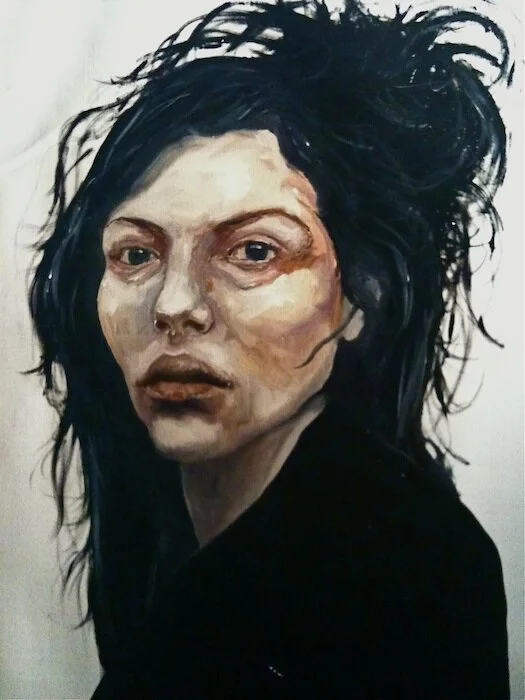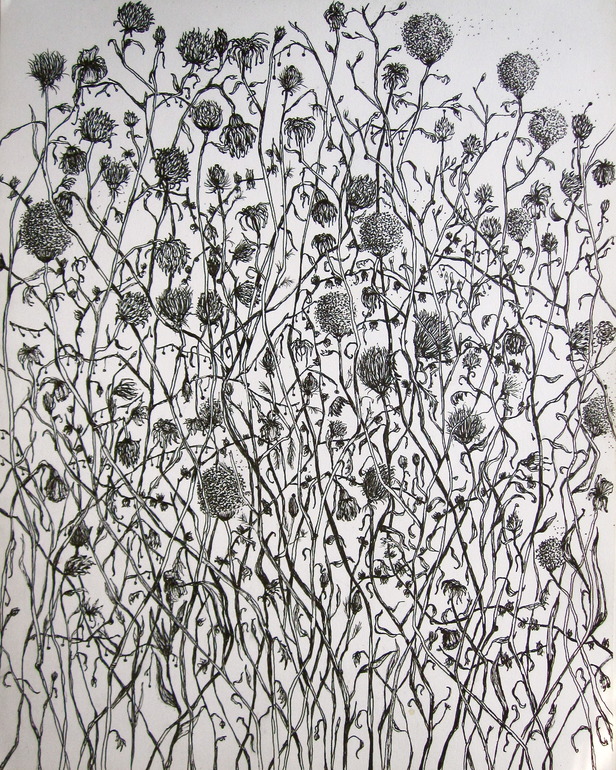Gregorio Racadio
Gregorio Racadio is an artist who lives and works in Philadelphia, Pennsylvania. Racadio is a painter who explores portraiture and naturalistic representation as a means to critique significant historical events, deconstructing long-held mythologies and replacing them with the coarse appearance of daily existence.
Racadio recently created nine cryptic portraits of Mormon elders who have been connected to the Mountain Meadows Massacre that took place in Utah on September 11, 1857. Ruptures of red color fill the stoic expression of Joseph Smith (2012) whereas Brigham Young in BY/BY-afterlife (2011) is characterized with a macabre gray pallor. Racadio questions who and what have underscored this event that is strongly connected to Mormon identity, one that the artist has eschewed while in pursuit of total transparency.
Other participants such as Hosea Stout, Philip Klingensmith and Elliot Willden appear in this series along with #3 (2012), a portrait of one of the terrorists who participated in the September 11th attacks launched upon New York’s World Trade Center in 2001. Racadio brings forth parallels between these two events as a critique of religious fanaticism and its resulting effects.
The relationship between crime and punishment surfaces in a small group of pen-on-paper drawings. Harcamone (2011) is inspired by Jean Genet’s Our Lady of the Flowers and portrays plants and blossoms in a series of unbroken lines that create an ebb and flow of movement wherein fresh flowers mingle with those that are gradually dying out. The leafy fronds depicted in Manchester, NY (2012) not only suggest the site where Joseph Smith discovered the golden plates that later became the book of Mormon, but the sporadic, undulating growths suggest an overall ambiguity. By eliminating protagonists from both narratives, the artist lets nature drive each story.
Gregorio Racadio became an artist after completing his studies in Modern Italian Literature at San Francisco State University. Influenced as well by the writings of Charles Baudelaire and Marcel Proust, the artist has a desire to expose twists of fate that have since evolved into questionable truths. Racadio’s visualized metaphors are cutting yet sobering, while painful and real as the human condition outweighs contemporary cultural mythology.




